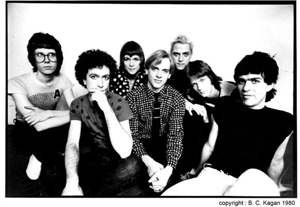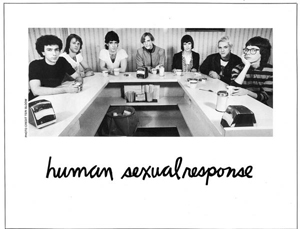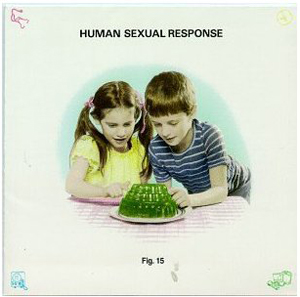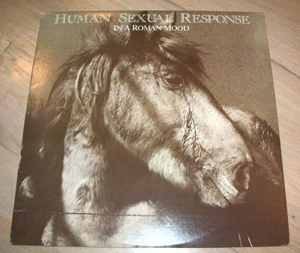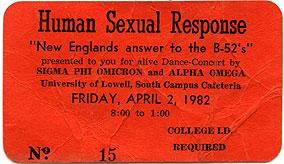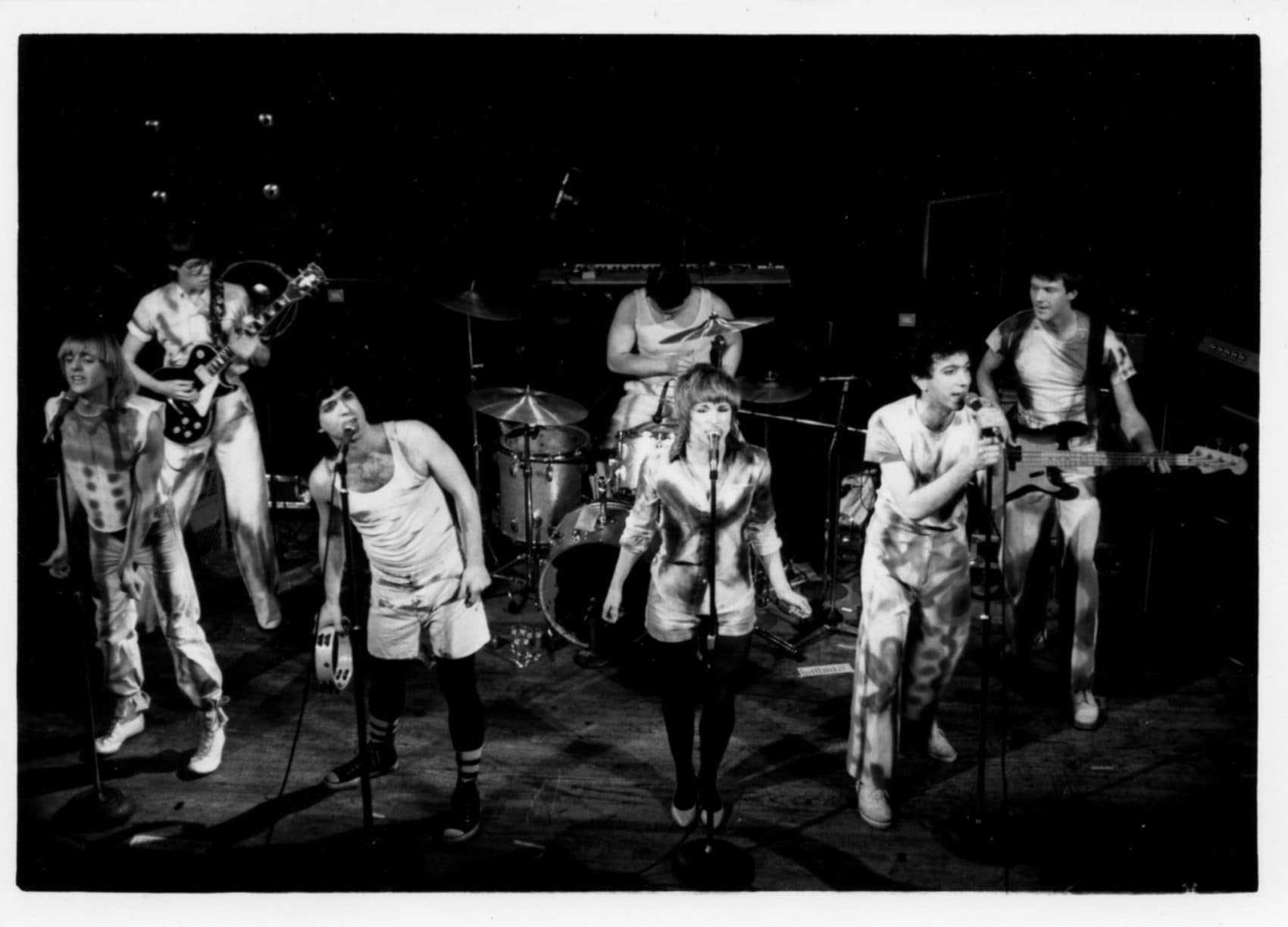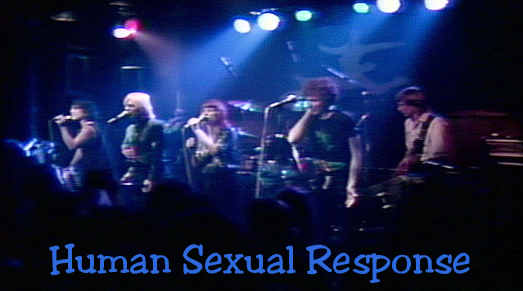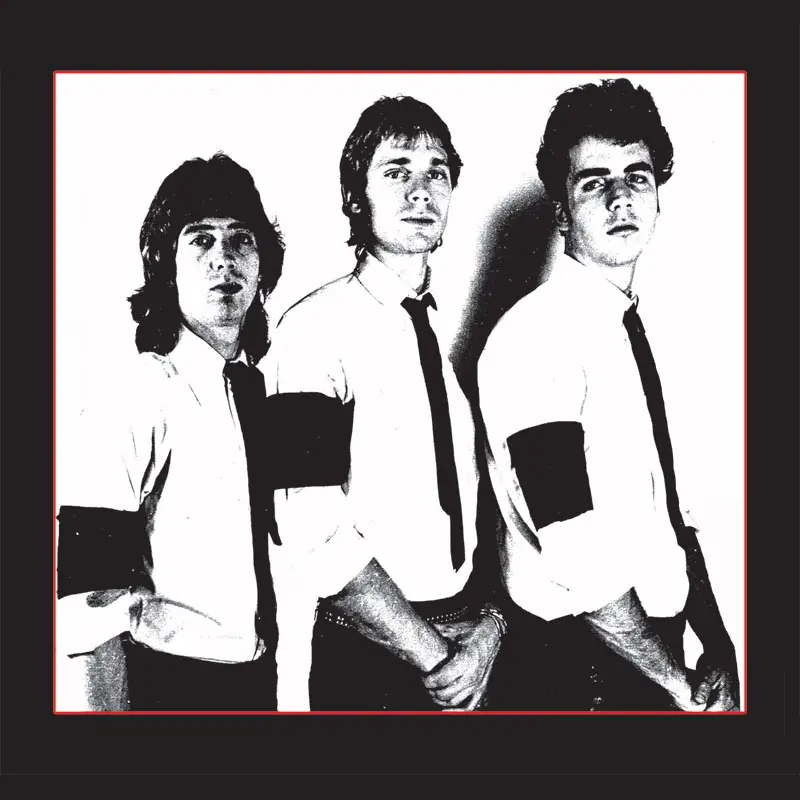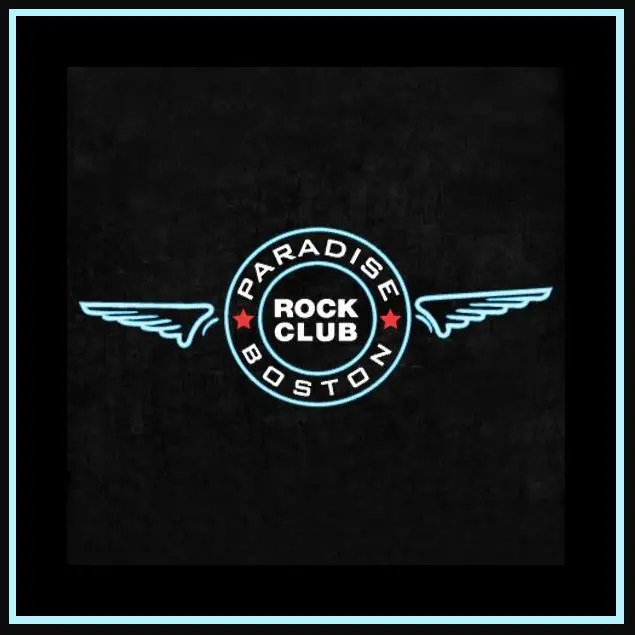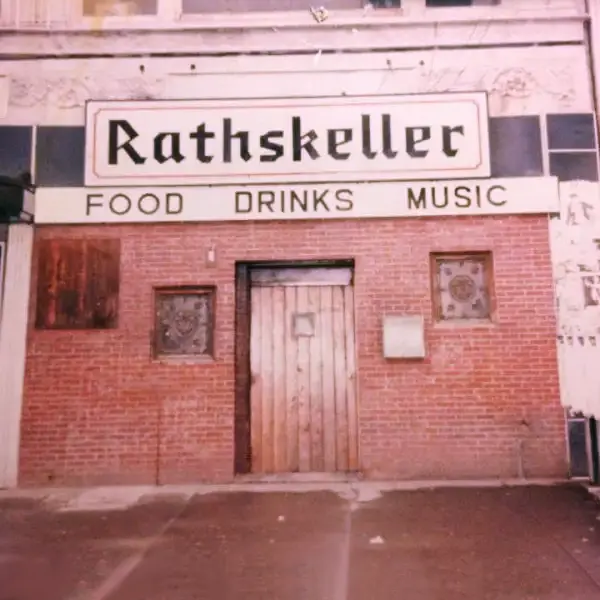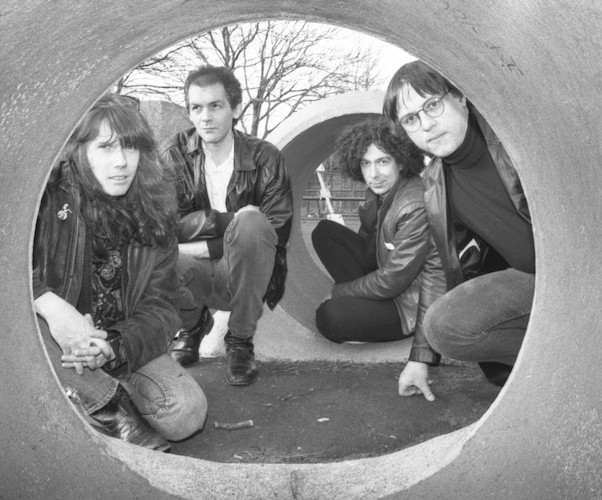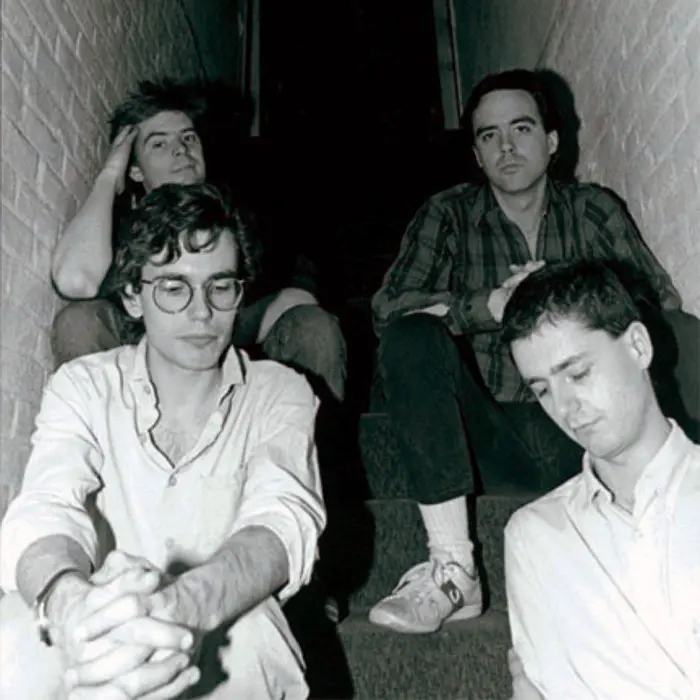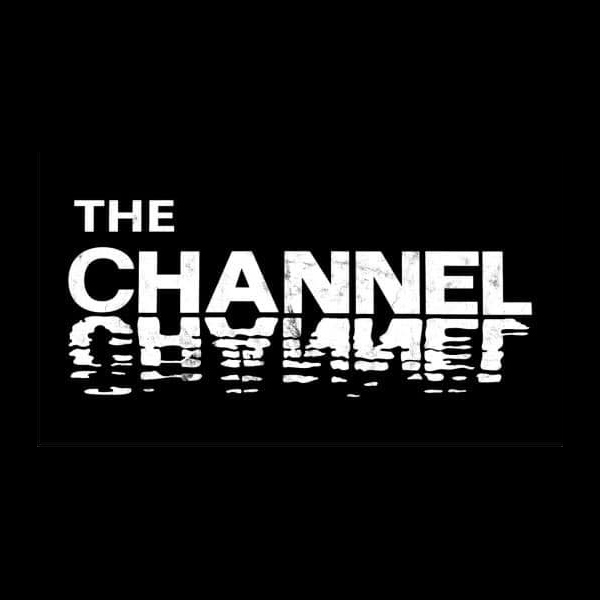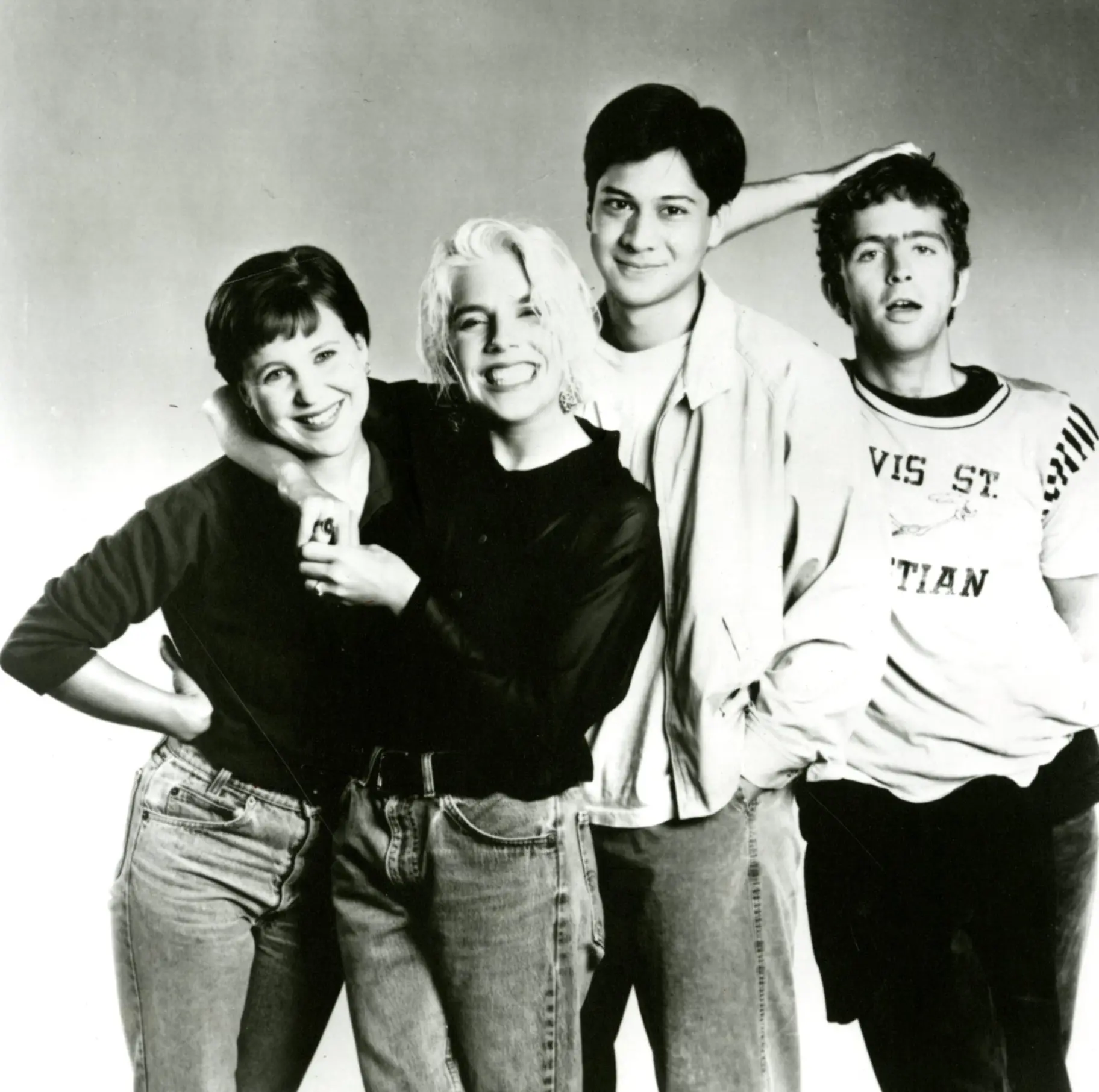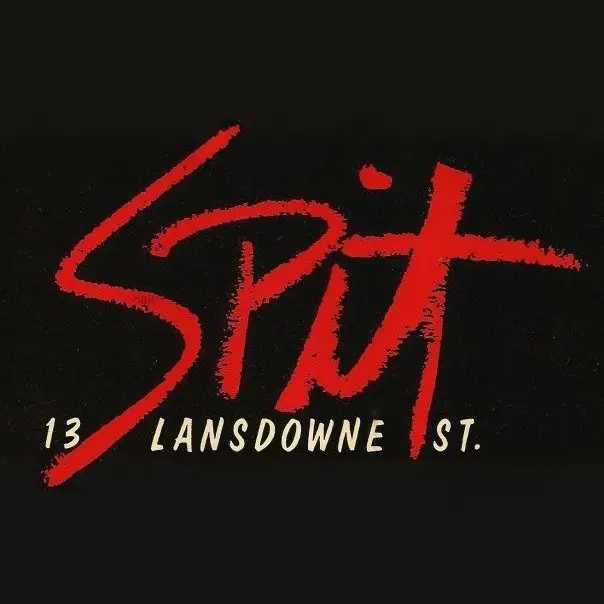Human Sexual Response
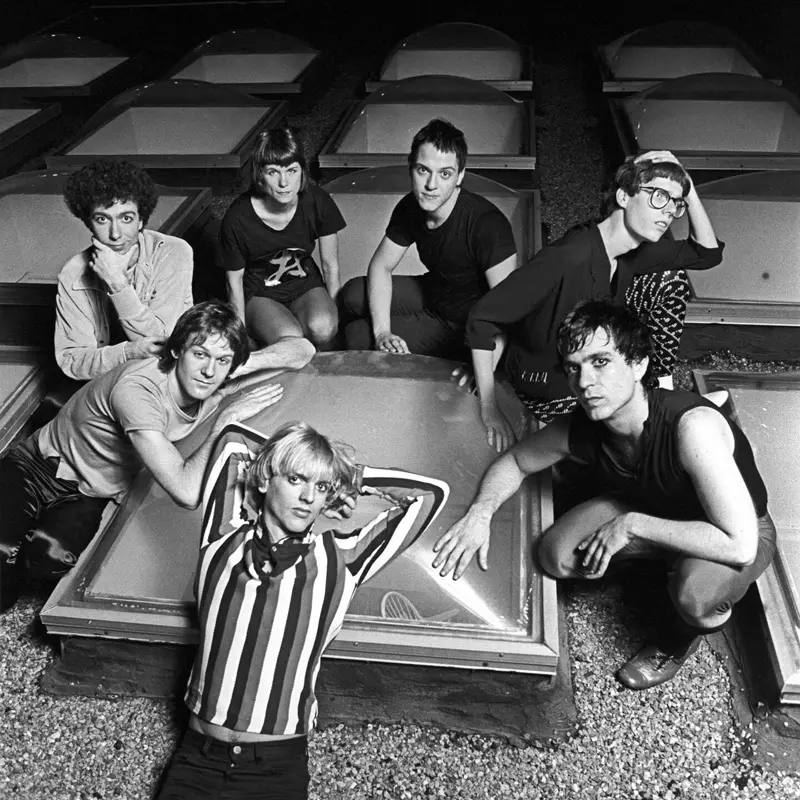
In 1979, when new wave was turning into sizable swell, it was common to hear pioneers of the synth-soaked genre almost hourly on “the rock of Boston,” WBCN, particularly The Cars. But it was almost as common for ‘BCN jocks to spin two singles from another local new-wave band, an unsigned one with a conspicuously clever, exceedingly eccentric name that matched their sound and lyrical themes to a tee.
The songs were “Jackie Onassis” and “What Does Sex Mean to Me?” and the group was Human Sexual Response, a quirky, Warholian septet comprised of four singers, a guitarist, a bassist and a drummer. A collection of creatives like none other in the city at the time, their outsized impact on the Boston scene – and their influence on future art- and indie-rock bands – belies the fact that “the Humans,” as fans called them, recorded only two albums and one EP. Many critics have said the reason that they never caught the national ear for more than a moment is because they were too far ahead of their time. “I listened to Human Sexual Response when I was, like, 12,” said Kristin Hersh of Throwing Muses in 2021. “That’s what we thought ‘grown-up’ music was. We didn’t find out until it was too late that the rest of the world would never catch up to Boston in that regard.”
An acoustical amalgam of early Roxy Music, David Bowie, hardcore, garage rock and Motown often compared to Talking Heads, Devo and The B52’s, the Humans’ mix of punk’s DIY ethos, Rocky Horror-esque campiness, melodic guitar, martial rhythms and distinctive four-part harmonies – all executed with Liberace-level flamboyance – made them the centerpiece of Boston’s nascent new-wave scene. Their songs were college-radio staples, defined the outer edges of what pop music could be and continue to be played on progressive radio today, 40-plus years after the band broke up.
Lyrical, Visual themes
Lyrically, the Humans often explored themes of sexual identity and three of the band members were openly gay in an era when “LGBTQIA” was just a meaningless jumble of letters. Walking a fine line between what primary songwriter Larry Bangor has described as “never totally serious, nor totally a joke,” tunes ranged from the frank imagery and humor of “What Does Sex Mean to Me?” – which gets political, questioning the Chinese government’s one-child policy (introduced in 1979) – to the darkness of “Anne Frank Story” (about the obvious topic) and “Andy Fell” (about a student who jumped to his death). In “Jackie Onassis,” arguably their best-known track, Bangor wrote about JFK’s widow wanting to fight off autograph hounds, change her name to “Jackie K.,” get Andy Warhol to paint her portrait and have a doll made in her image.
Visually, the Humans were a cross-dressing tour de force that would’ve made RuPaul proud. For some shows, they wore ‘50s-era nurses’ uniforms, for others they adorned their near-naked bodies with branches and leaves – resulting in a poison-sumac breakout on a band member after one performance – and on other occasions they made stage garb from fabric plastered with Donny and Marie Osmond’s faces. At Halloween gigs in Boston and Los Angeles, they donned what Bangor called “orangutan outfits”: black jockstraps, long, black tails, bodies painted black and hair and rear ends painted bright pink.
Origins
The seeds of the Humans’ were planted in the all-kazoo band Kazoondheit, formed in 1976, which morphed into the a capella country-western quartet Honey Bea & The Meadow Muffins. Both groups included vocalists Dini Lamot and his future husband, the late Windle Davis, each of whom had gone to art school in Boston; Casey Cameron, their Coolidge Corner neighbor who was an editor at publishing house Little, Brown & Co.; and Larry Bangor, Dini’s older brother.
“For about a year or more we sang our ‘hit’ song ‘Plain Brown Wrapper’ at parties, outdoor festivals and ice cream parlors,” Cameron told WBUR in 2017. “After a while, we realized we were just fooling ourselves and we really wanted to be in a rock band, so we ditched the glitter cowboy outfits and went over to punk/new wave just as it surged in the late ‘70s.”
Formation, Songwriting, Name
In early 1978, in an effort to find musicians for the new group, the four singers put flyers in music shops and convenience stores before placing an ad in The Boston Phoenix listing the artists they admired most, among them Brian Eno, Lesley Gore, Jonathan Richman, The Mamas & the Papas, David Bowie, The Chipmunks, MC5 and The Jackson 5. The ad landed them guitarist Rich Gilbert, bassist Rolfe Anderson (of The Modern Lovers’ original lineup) and drummer Malcolm Travis. Anderson left in 1980, replaced by Chris Maclachlan.
Bangor wrote or cowrote all the band’s songs and sang most of the leads in a jittery tenor that critics often compared to Television frontman Tom Verlaine’s; Lamot, Davis and Cameron sang lead occasionally. The band’s name is the title of Willam H. Masters’ and Virginia E. Johnson’s seminal 1966 book, which was a best seller despite having been written a clinical tone and intended for medical professionals. That oddly academic choice was an acknowledgement of their Boston roots, some critics have theorized, given the city’s renown as a hub for hospitals and higher education.
Early shows, Demos, Fig. 14
The Humans’ first public performance was on October 16, 1977, in Boston’s notorious Combat Zone at The Birdcage, which Bangor has described as “a biker-stripper club that, for some reason, started having bands.” He tributes La Peste with getting them the gig. “I had seen The Inflictors, La Peste and The Real Kids there,” he said in 2021. “La Peste had heard us rehearsing and said we should get a gig there, but we weren’t ready since didn’t have ‘the sound’ yet. They said that it didn’t matter and they got us that gig.” The band spent the next year or so playing at clubs, universities and colleges around New England and by early 1979 – when they recorded demos of “Jackie Onassis” and “What Does Sex Mean to Me?” – they were appearing at notable Boston venues like Cantones, the Paradise Rock Club and the Rathskeller.
In 1980, the group cut the nine-track LP Fig. 4 at Downtown Recording, located in the Cyclorama building on Tremont Street in Boston. Released by boutique label Eat Records, based in Salem, Massachusetts, the album turned them into something of a national sensation practically overnight, with leading stations like KROQ in Los Angeles giving it regular airplay. That led to shows all across the US, including headlining at famous venues like Hurrah’s in New York City (where they met Andy Warhol) and Madame Wong’s in LA, and they opened for some of the era’s best-known acts including Talking Heads, The Ramones, The Knack and Public Image Ltd.
Gay Pride influence, Diverse audiences
The Humans often played at gay clubs and some have attributed their rapid rise to the growing Gay Pride movement of the early ‘80s, but their audiences were extremely diverse. “Our crowd was totally mixed,” Lamot said in a 2017 interview. “You’d have hard biker guys standing next to drag queens, hippies, beatniks and strippers, and not everyone in the band was gay. Also, it was the era when being gay or bisexual was cool – there was no AIDS thing yet.”
In 2022, Lamot recounted the time when Caroline Kennedy and John F. Kennedy, Jr. came to one of the Humans’ Boston shows and heard “Jackie Onassis,” which Bangor had written about their mother. “Caroline did not like the last line of the song and left, but John actually came backstage to say ‘hi’ to the band,” he said. “And Jackie’s mom once heard us at a wedding and said, ‘I’m sure Jacqueline would love the song.’”
In a Roman Mood, Pound, Disbanding
In 1981, the Humans cut their 11-track sophomore effort, In a Roman Mood, at a studio in New Jersey with producer Mike Thorne (Soft Cell, ‘Til Tuesday, John Cale). Released by Passport Records, the album was substantially more serious in tone than Fig. 14 and – though some reviews hailed it as a misunderstood masterpiece – a cavalry of critics lambasted the LP as unbearably pretentious and unfocused. The track “Land of the Glass Pinecones” was a minor hit in the Boston area and later in 1981 Passport issued the EP Pound, which includes “Blow Up” from In a Roman Mood, an instrumental version of “Public Alley 909” and an extended version of “Pound.”
After the release of In a Roman Mood, the Humans played mainly around the Northeast before breaking up in the spring of 1982, about eight months after the launch of MTV in August 1981. The reasons behind the sudden split were “complicated,” Bangor said at the time, but Davis was more specific. “In spring 1982, we were playing a sold-out show at the 9:30 Club [in Washington, DC] and Larry confessed to me that he was weary of writing songs for four singers,” he said. “The band broke up when we returned to Boston.” Since then, Gilbert has commented that things might have gone differently if MTV had come along a year or two earlier. “That definitely could have helped us because we had such a visual nature,” he said in 2017. “And we’d probably have had some interesting videos. But who really knows?”
Post-Humans activity, Reunion shows, Fig. 15
Following the split, Travis, Gilbert, Bangor and Maclachlan formed The Zulus. Later, Gilbert and Zulus bassist Rich Cortese played in Concussion Ensemble and Travis joined Bob Mould’s post-Hüsker Dü band Sugar, then Kustomized with Peter Prescott of Mission of Burma. Casey left show business to work as a content developer, Lamot performed occasionally in drag as “Musty Chiffon” and he and Davis owned and operated The Inn at Hudson in Hudson, New York.
The Humans have reunited several times, most recently at the House of Blues in Boston in November 2017 (with opener Unnatural Axe). They did a Halloween show in 1984 at Spit, another one in 1986 at The Channel, a New Year’s Eve show in 1988/89 at the Paradise, a November 2008 gig at Jason’s Upstairs Bar in Hudson and appeared at the House of Blues in Boston in November 2012.
In 1991, Eat Records released Fig. 15, a 10-track disc of previously released material with a bonus track the group had only performed live, “Butt Fuck.” In early 1982, the Humans drew the attention of the US Federal Communications Commission when they performed the song on WCVB-TV’s Five All Night, Live All Night, though the FCC did not pursue legal action.
Band members’ reflections
Asked on the day of their 2017 reunion show for reflections on the Humans’ years together, Gilbert said the band was “always trying to make it an event, not just for the audience, but for us as well” and Cameron said they always tried to be “provocative” and “daring.” Noting that they were “very much a band of our time,” Bangor said that “the idea of changing or streamlining anything didn’t make sense…we just played how we felt.”
Maclachlan’s comments were as cut and dried as they were confident and proud. “Human Sexual Response was just the best new-wave band in town, period,” he said. “I can say that from an audience viewpoint in 1979. That’s why I wanted to join when the chance came. Human Sexual Response was absolutely, organically right.”
(by D.S. Monahan)

